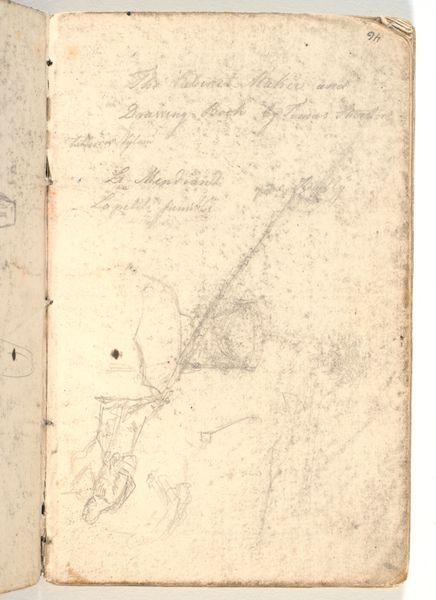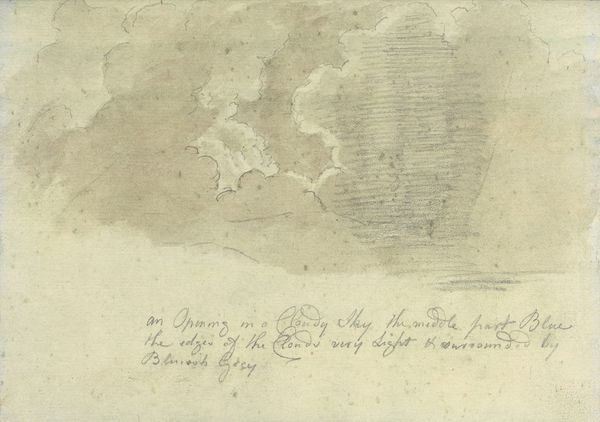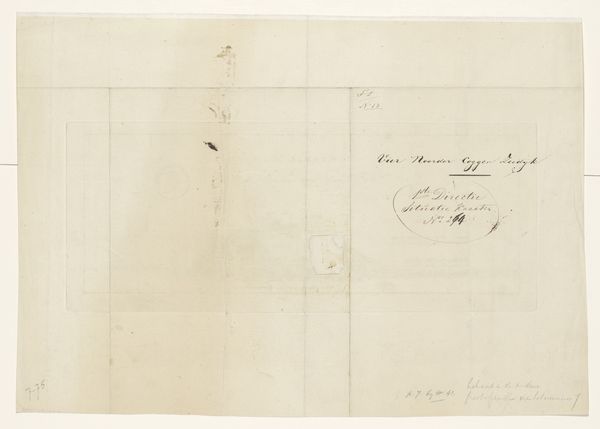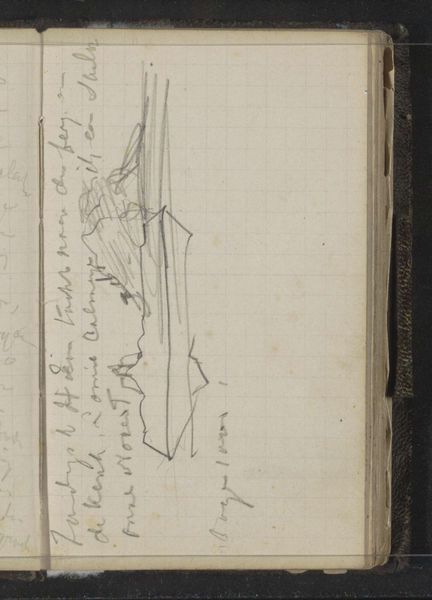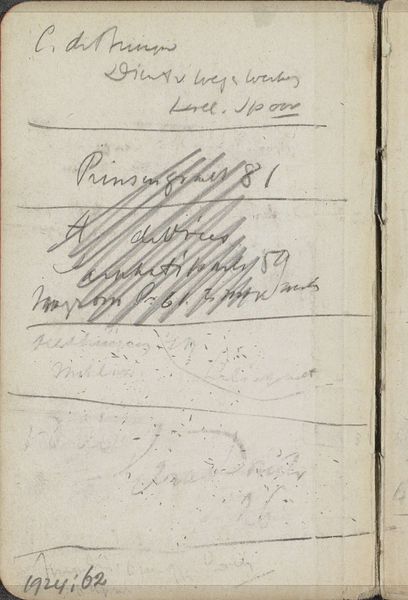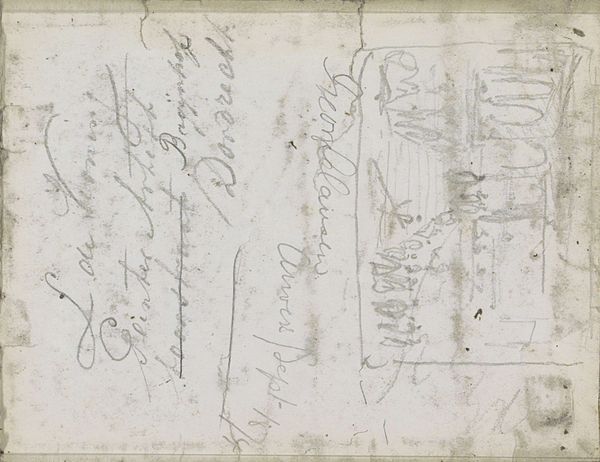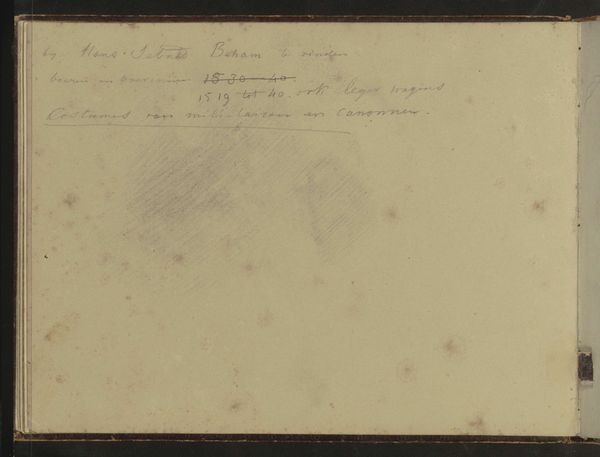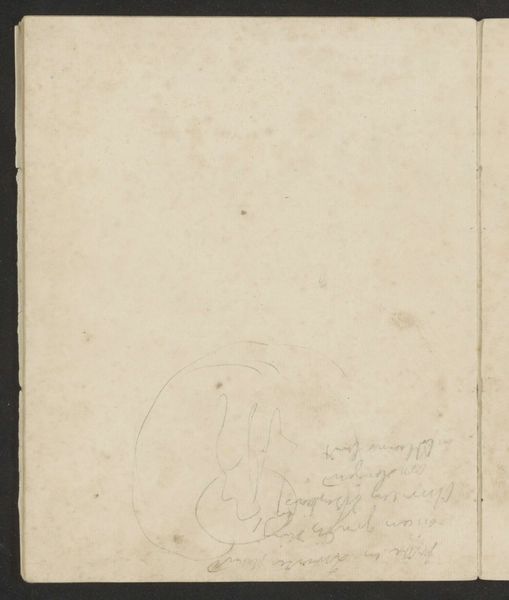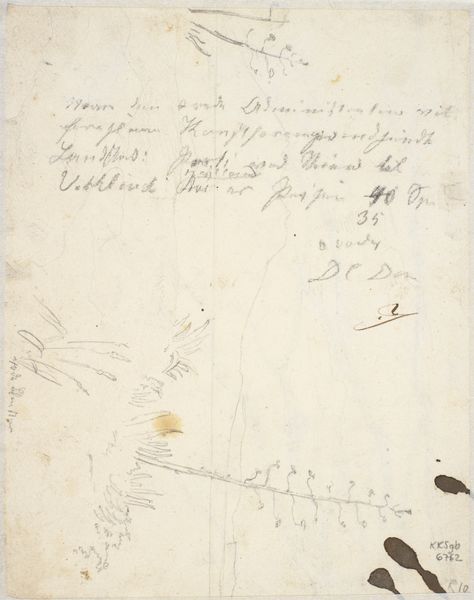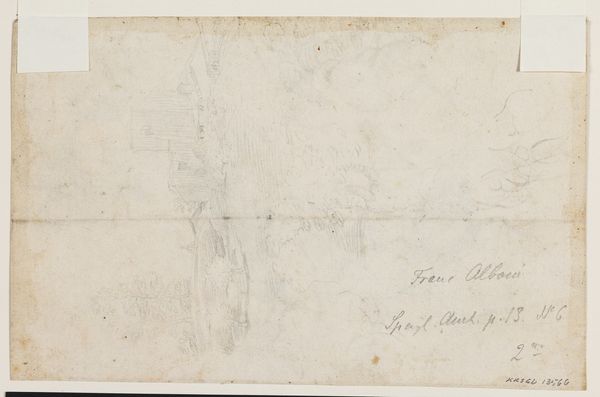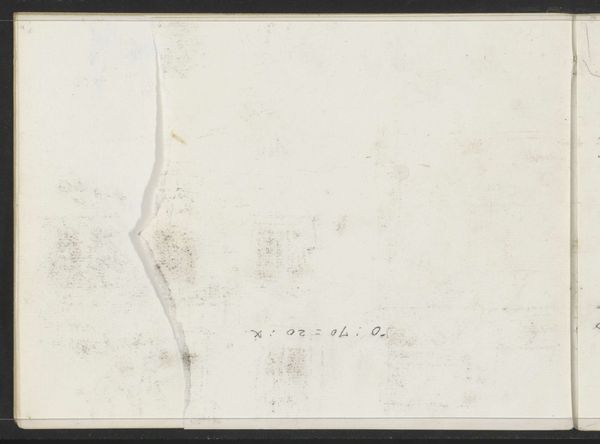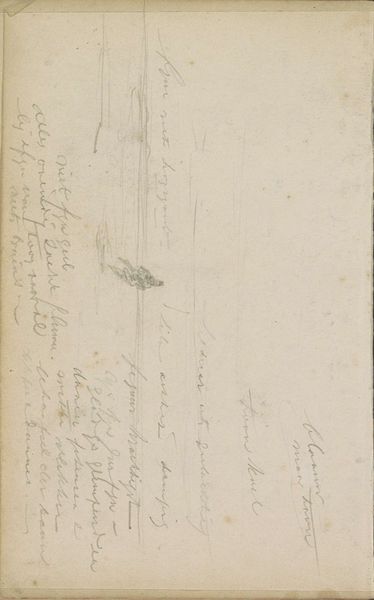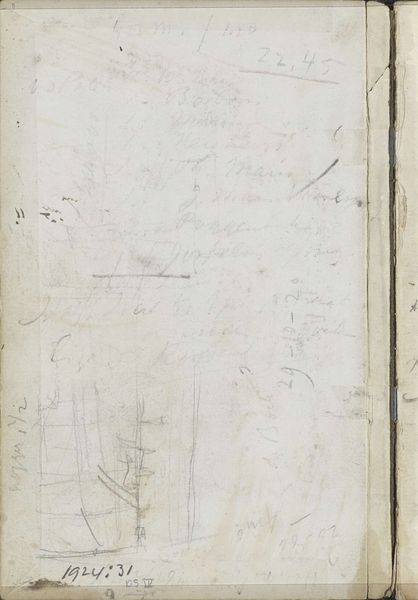
drawing, paper, pencil
#
drawing
#
impressionism
#
landscape
#
paper
#
sketch
#
pencil
#
watercolor
Copyright: Rijks Museum: Open Domain
Curator: Oh, it's just a scrap. Literally. Like a fragment of something bigger, you know? Editor: That's precisely the beauty of it. George Hendrik Breitner's "Studie en annotaties," from 1881 to 1883, pencil and watercolor on paper, isn't just a preliminary sketch; it's a record of a moment, almost an artifact. Curator: My immediate feeling? A sort of wistful… detachment. Like peering through fog at something half-remembered. The stains, the ragged edges... it's so fragile. Editor: Fragility underscores its importance. Notes are written in beautiful script on the upper section of the fragment; meanwhile below the writing lies an initial cartographic impression rendered quickly. It shows the area between Saint-Gilles and Brussels and underscores, Breitner’s interest in location and perspective. This drawing’s appeal lies in Breitner’s process. Curator: It is kind of poetic, in a way, that something intended as a practical, working document can become so evocative. Like a painter whispering a secret across time. Editor: Secrets held within symbols, that's my domain! Sketches and annotations are never without importance, nor even “accidental”. This, like many initial mappings throughout history, attempts to assert control over space. Even the absent sections around the landscape, create an unspoken desire to dominate space – particularly, one of an unseen empire. It speaks of boundaries, known and unknown, visible and invisible. It’s always fascinating what artists unintentionally project! Curator: Hah, a landscape as empire-building. You’d find that in a blank sheet of paper, I swear! But yeah, I see what you mean. It’s all there in the subtle shading and barely-there lines. Even the paper itself, aged and stained. Editor: Exactly. Every detail carries meaning, a residue of its creation, its use, its survival. Consider the visual weight of a map even today. And how such depictions always become implicated in notions of identity, belonging, and otherness! Curator: It's funny to think that Breitner probably tossed this aside after he was done with it. Little did he know it would end up in a museum, dissected and analyzed for its "deeper meaning." Editor: And appreciated for the complex document it truly is. We assign the cultural worth, of course, but, sometimes, even a fragment whispers volumes. Curator: Agreed. Sometimes, the discarded things tell the most fascinating stories, wouldn’t you agree?
Comments
No comments
Be the first to comment and join the conversation on the ultimate creative platform.
